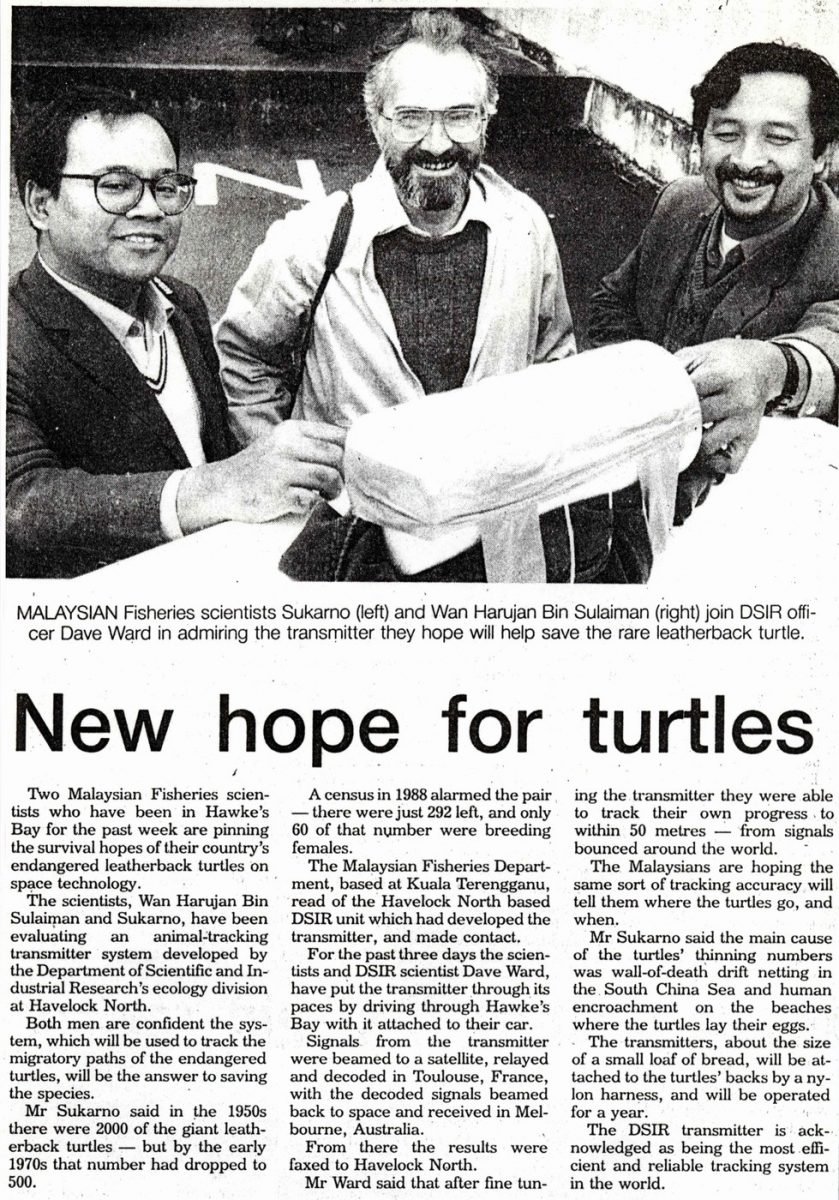New hope for turtles
Two Malaysian Fisheries scientists who have been in Hawke’s Bay for the past week are pinning the survival hopes of their country’s endangered leatherback turtles on space technology.
The scientists, Wan Harujan Bin Sulaiman and Sukarno, have been evaluating an animal-tracking transmitter system developed by the Department of Scientific and Industrial Research’s ecology division at Havelock North.
Both men are confident the system, which will be used to track the migratory paths of the endangered turtles, will be the answer to saving the species.
Mr Sukarno said in the 1950s there were 2000 of the giant leatherback turtles – but by the early 1970s that number had dropped to 500.
A census in 1988 alarmed the pair – there were just 292 left, and only 60 of that number were breeding females.
The Malaysian Fisheries Department, based at Kuala Terengganu, read of the Havelock North based DSIR unit which had developed the transmitter, and made contact.
For the past three days the scientists and DSIR scientist Dave Ward, have put the transmitter through its paces by driving through Hawke’s Bay with it attached to their car. Signals from the transmitter were beamed to a satellite, relayed and decoded in Toulouse, France, with the decoded signals beamed back to space and received in Melbourne, Australia.
From there the results were faxed to Havelock North.
Mr Ward said that after fine tuning the transmitter they were able to track their own progress to within 50 metres – from signals bounced around the world.
The Malaysians are hoping the same sort of tracking accuracy will tell them where the turtles go, and when.
Mr Sukarno said the main cause of the turtles’ thinning numbers was wall-of-death drift netting in the South China Sea and human encroachment on the beaches where the turtles lay their eggs.
The transmitters, about the size of a small loaf of bread, will be attached to the turtles’ backs by a nylon harness, and will be operated for a year.
The DSIR transmitter is acknowledged as being the most efficient and reliable tracking system in the world.
Photo caption – MALAYSIAN Fisheries scientists Sukarno (left) and Wan Harujan Bin Sulaiman (right) join DSIR officer Dave Ward in admiring the transmitter they hope will help save the rare leatherback turtle.












Do you know something about this record?
Please note we cannot verify the accuracy of any information posted by the community.